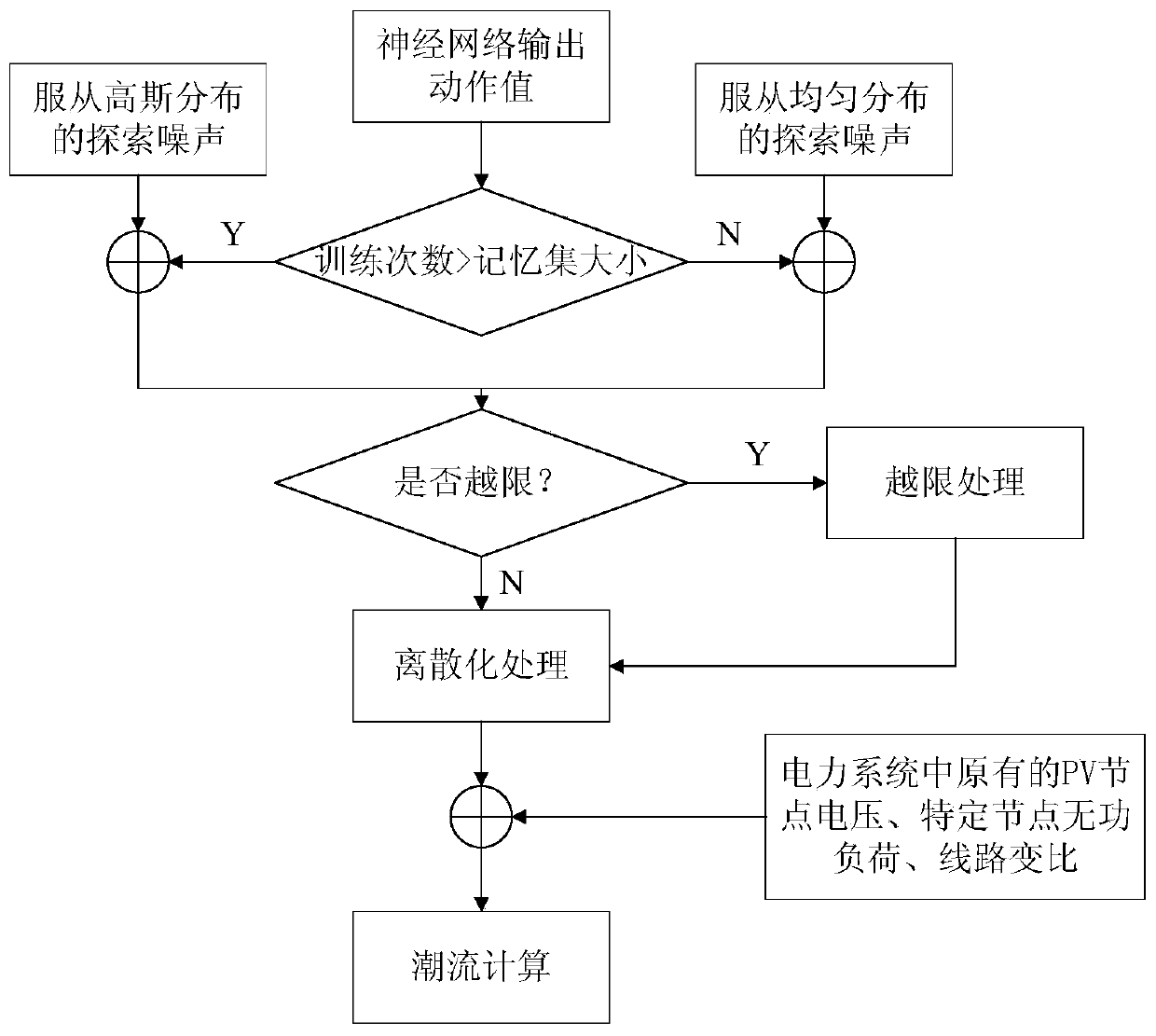Power system reactive power optimization method based on depth determination strategy gradient reinforcement learning
A power system and reinforcement learning technology, applied in reactive power compensation, reactive power adjustment/elimination/compensation, electrical components, etc., can solve problems such as deep reinforcement learning is rarely applied
- Summary
- Abstract
- Description
- Claims
- Application Information
AI Technical Summary
Problems solved by technology
Method used
Image
Examples
Embodiment 1
[0059] A power system reactive power optimization method based on depth-determined policy gradient reinforcement learning, the steps are as follows:
[0060] Step 1: Use the physical quantities used in the reactive power optimization calculation of the power system to describe the variables in the deep reinforcement learning, so as to achieve the purpose of applying the deep reinforcement learning algorithm to the reactive power optimization of the power system:
[0061]
[0062] Among them, P loss is the active network loss; k transformer ratio; n l is the total branch number of the network; G k(i,j) is the conductance of branch i– j; U i , U j are the voltages of nodes i and j respectively; ω i , ω j are the phase angles of nodes i and j respectively; f is the reactive power optimization purpose of the power system;
[0063] Step 2: The wide-area measurement system of the power system obtains the power, phase, power angle, and voltage amplitude information of each n...
Embodiment 2
[0104] In this embodiment, a power system reactive power optimization algorithm based on deep deterministic policy gradient reinforcement learning is used to perform reactive power optimization calculations on the IEEE30 node test system. The power system simulation part uses the Matlab program to calculate the power system power flow; the algorithm part uses Python language programming and is compiled and passed on the Pycharm compiler software. At the same time, the tensorflow1.0 deep learning framework developed by Google and the CUDA9.0 computing framework of Nvidia are used, and the parallel computing engine of the GTX-1060 graphics card is used to make the entire optimization process have extremely fast computing speed.
[0105] (1) IEEE30 node standard test system
[0106] The system has four transformers and five generators. Four compensation points are selected to meet the requirements of reactive power optimization. The upper and lower limits of the node voltage are ...
PUM
 Login to View More
Login to View More Abstract
Description
Claims
Application Information
 Login to View More
Login to View More - R&D
- Intellectual Property
- Life Sciences
- Materials
- Tech Scout
- Unparalleled Data Quality
- Higher Quality Content
- 60% Fewer Hallucinations
Browse by: Latest US Patents, China's latest patents, Technical Efficacy Thesaurus, Application Domain, Technology Topic, Popular Technical Reports.
© 2025 PatSnap. All rights reserved.Legal|Privacy policy|Modern Slavery Act Transparency Statement|Sitemap|About US| Contact US: help@patsnap.com



